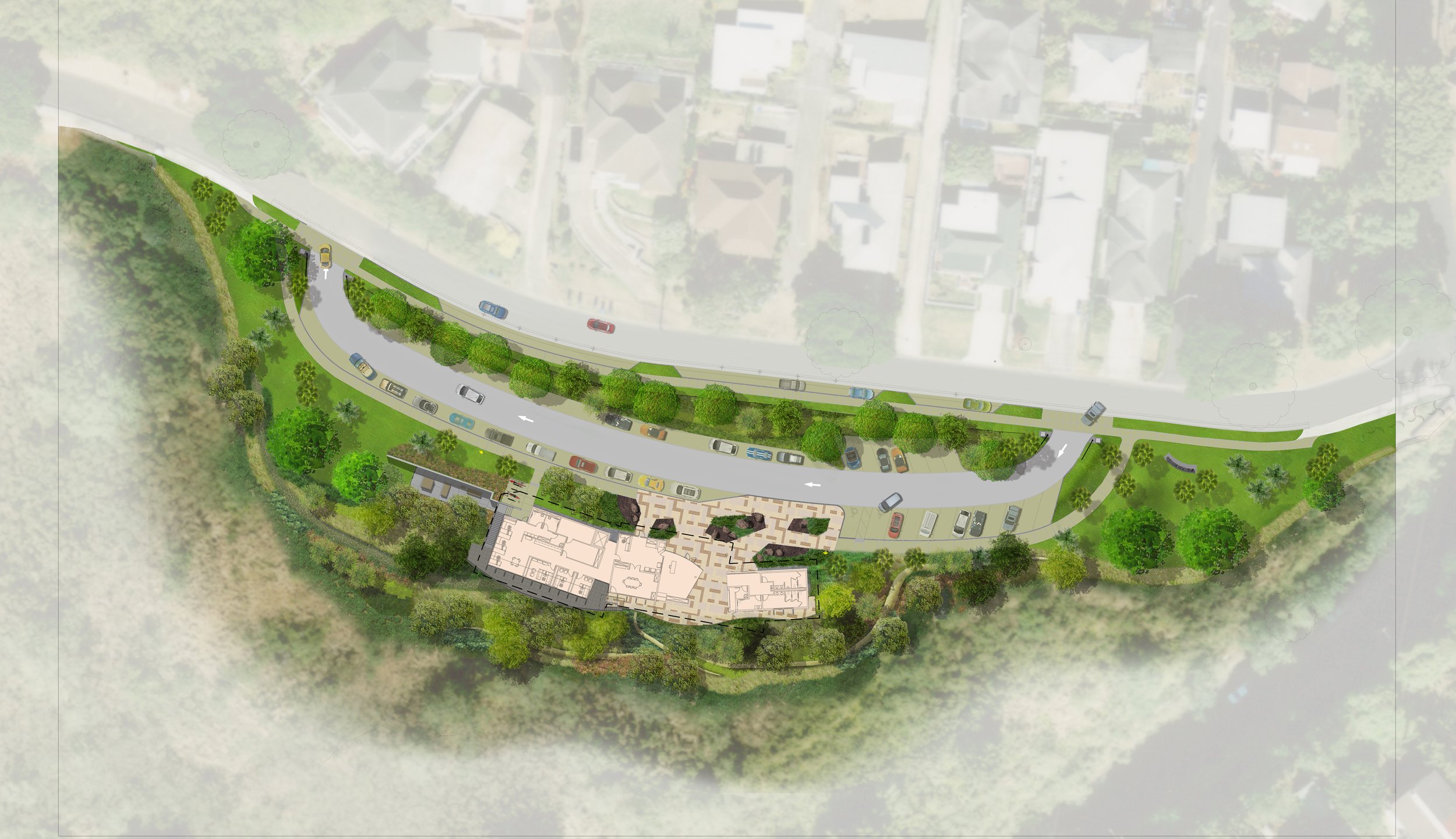
NATIONAL MEMORIAL CEMETERY
OF THE PACIFIC
A good neighbor to the community and the environment
Aerial of Pūowaina Crater, pre-construction
Project Location: Honolulu, Oahu, Hawaii
Typology: Federal, Cemetery, Cultural, Native Planting
Built: 2018
The National Memorial Cemetery of the Pacific is a national cemetery located in Pūowaina (Punchbowl) Crater in Honolulu, Hawaii. The National Memorial Cemetery serves as a resting place to honor men and women that served in the United States Armed Forces.
Pūowaina is an extinct volcano formed 75,000-100,000 years ago during the Honolulu Volcanics era. Pūowaina is commonly translated as “Hill of Sacrifice” and is famous for the numerous Native Hawaiian Heiau, Native Hawaiian Heiau that once framed the site. During the reign of Kamehameha I, the crater was used to mount cannons to salute maritime arrivals. The crater was also used to place batteries to protect Honolulu and Pearl Harbor during World War II.
The National Memorial Cemetery began construction in 1948 and was dedicated in 1949. The Cemetery is the resting place for approximately 53,000 World War II, Korean War, and Vietnam War veterans and their dependents. The Cemetery is one of the most visited sites in Hawaii and hosts as many as 100 tour buses per day.
The Cemetery depleted all remaining gravesites in early 2010. This project aimed to increase capacity to 9,000 additional columbaria niches for cremated remains.
The landscape design concept focused on:
Prioritizing Native Hawaiian Plants and Sense of Place
Entry Experience and Accessibility
Sustainable Design Interventions
The site design is organized into several specific zones:
Entry drive and Plaza Drop Off
Emergency Egress Path
Native Landscape Rehabilitation Retaining Walls
The Entry drive and plaza drop off are designed to allow for clear site lines and reduce traffic congestion. The landscape buffer fence, entry and egress gates provide controlled access to the National Memorial.
The paving and planting areas within the plaza include swaths of natural lava rock, native hawaiian groundcover plants, and specimen boulders to create a welcoming place-based entry honoring the site’s Hawaiian volcanic origin.
The emergency egress path is a 5’ crushed rock path. Retaining walls were used to reduce the limits of grading and create terraced areas for Native Hawaiian dryland forest rehabilitation.
The majority of landscape planting consists of native Hawaiian plants adapted to drier, mid-elevation environments. They are generally drought tolerant and once established require relatively low maintenance. An exception is the ‘Celebration’ Bermuda grass lawn to match the existing lawn in the cemetery.





























